I have a dataframe that only lists months from October to April. When I plot this data on a line graph, it includes the unused months as well. I would only like to show the months that are listed in the data so there is no unused space on the plot.
The code I am using for the plot
gplot(df,aes(GAME_DATE,DEF_RATING)) +
geom_line(aes(y=rollmean(df$DEF_RATING,9, na.pad = TRUE))) +
geom_line(aes(y=rollmean(df$OFF_RATING,9,na.pad = TRUE)),color='steelblue')
Sample data
GAME_DATE OFF_RATING DEF_RATING
<dttm> <dbl> <dbl>
1 2017-04-12 106.1 113.1
2 2017-04-10 107.1 100.8
3 2017-04-08 104.4 105.1
4 2017-04-06 116.1 105.9
5 2017-04-04 116.9 116.0

